While architects prefer using the north light for interiors so that rooms do not get heated up, they can’t avoid fenestrations on the South, and sometimes on the East and West facades of the building.
Having large openings on these sides might, apart from daylight, bring in enormous amount of heat energy into the indoor spaces.
In such situations it becomes extremely important to shade the indoor spaces in the peak hours of strong daylight. There can be more than one way to shield your interiors against the sun.
One is to use exterior solar shading devices like sunshades, light shelves and overhangs. Another would be through landscaping; yet another through materials such as low shading coefficient glass.
One of the most common and economical ways is to use interior shading devices such as blinds and curtains, of which we shall describe the several kinds of blinds you could use in your own house without compromising on the aesthetic bit.
Different Types of vertical Blinds
1. Vertical blinds
These are essentially vertical pieces of fabric, which are arranged in a tilted fashion for some privacy as well as to allow a certain amount of light within.
They are provided with a sidewinder and cord or a wand may be used to slant the blinds and haul them back. They are suitable for all kinds of spaces within your house.
They are easy to maintain and need regular cleaning or wiping. The louver widths can be chosen from, according to the space right outside the window. If you want to use vertical blinds for kitchens and bathrooms, better go for PVC or Teflon as materials.

2. Roller Blinds
These blinds define simplicity and neatness. The fabric of the blinds swathes around the tube at the top of the window. The blind can be customised with a pull, pole, braid, shaped hem or eyelets.
Suitable for all room types, these blinds can be cleaned very easily with a dry or a wet cloth. The blinds also come in a cordless alternative that is without sidewinder.

3. Pleated Blinds
These blinds employ folds of fabric, fashioned in honeycomb or concertina. Suitable for almost all rooms and spaces of the home, these blinds carry a special aesthetic value to themselves.
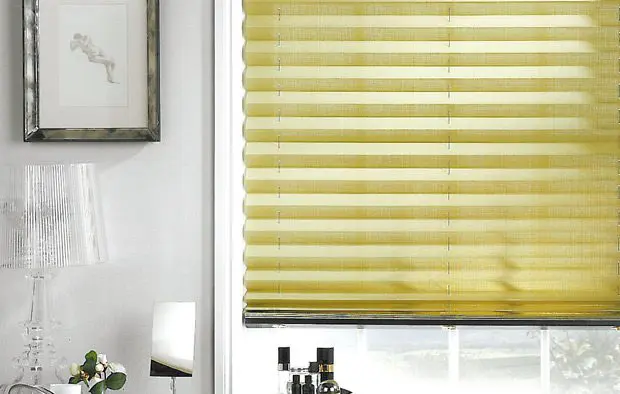
4. Venetian Blinds
Venetian blinds are composed of horizontal slats which can be inclined to manage daylight and retreat. Suitable for all rooms, venetian blinds can be wiped clean with a dried out duster. The louvers can be slanted with the help of tilt rods and can be lifted or lowered with the help of cord.
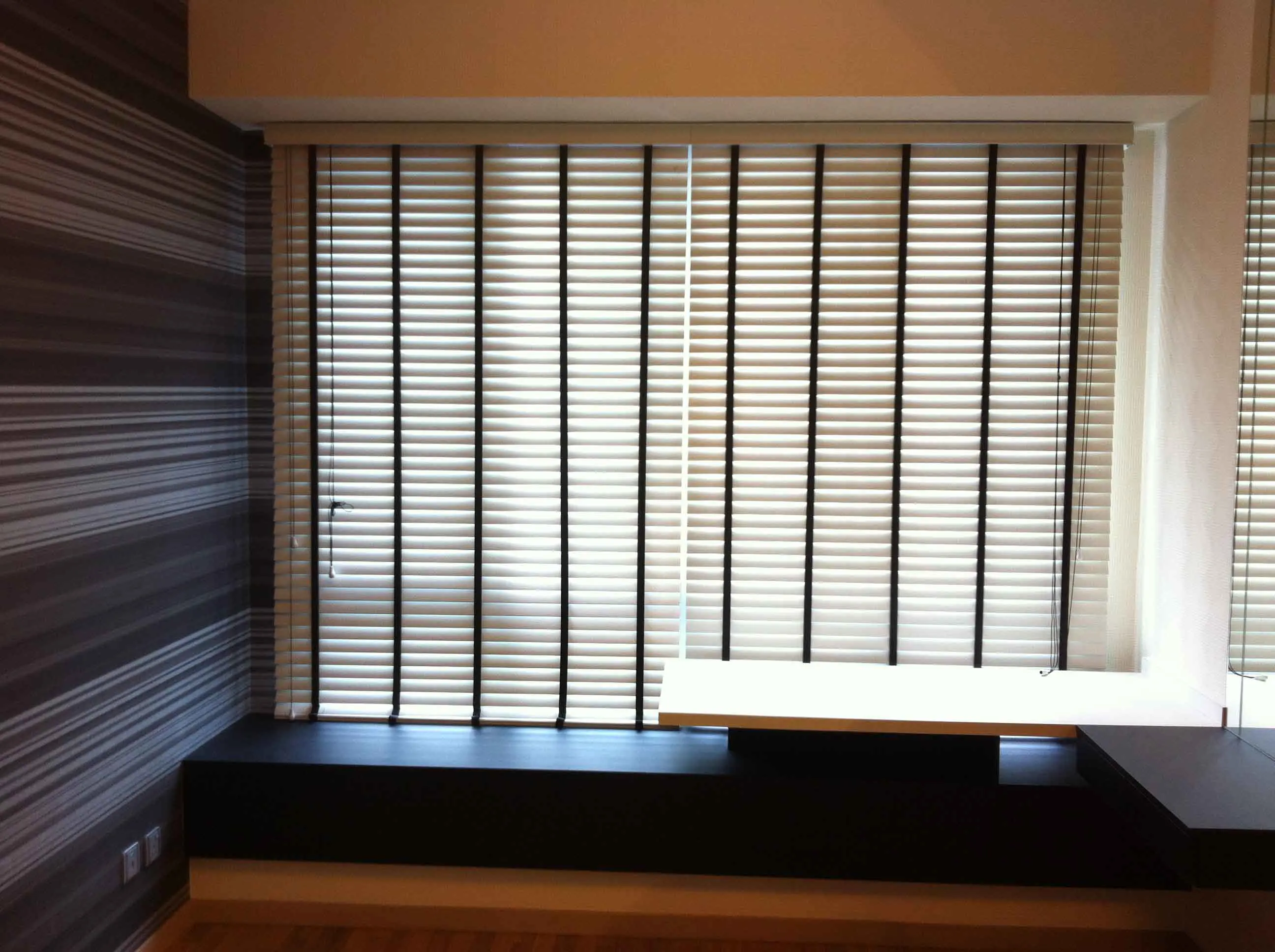
5. Roman Blinds
Roman blinds are made of soft fabric, which when heaved, cascade up. These blinds provide a more deluxe look and feel to your spaces, and hence should be preferred in spaces where you expect guests like the living room, the dining space or even the bedroom.
Depending on the quality of the fabric, they may be cleaned accordingly. The mechanism of the blinds involves a head rail, a cord and a cleat. You may choose to add metallic chains or attractive sidewinders.
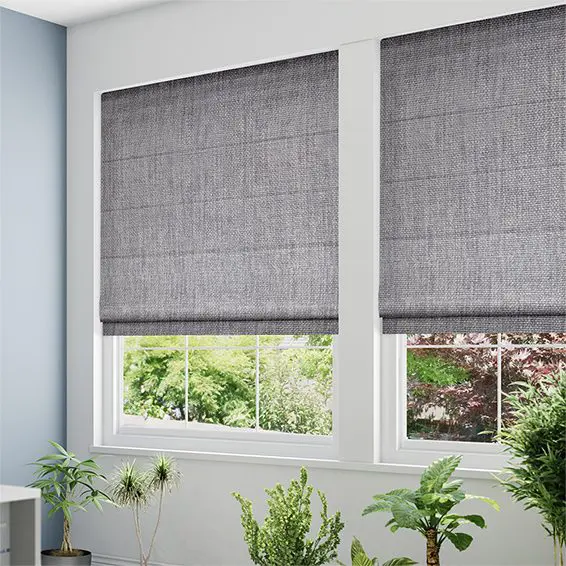
6. Wooden blinds
These blinds involve horizontal wooden planks which, just like Venetian blinds, can be tilted to control the amount of daylight and extent of privacy.
They are considered as the most suitable options for bedrooms, living rooms and dining rooms and employ similar methods of cleaning and wiping.
Slat widths can be chosen from a wide range of options. Besides, you can choose to go for tapes instead of cords.
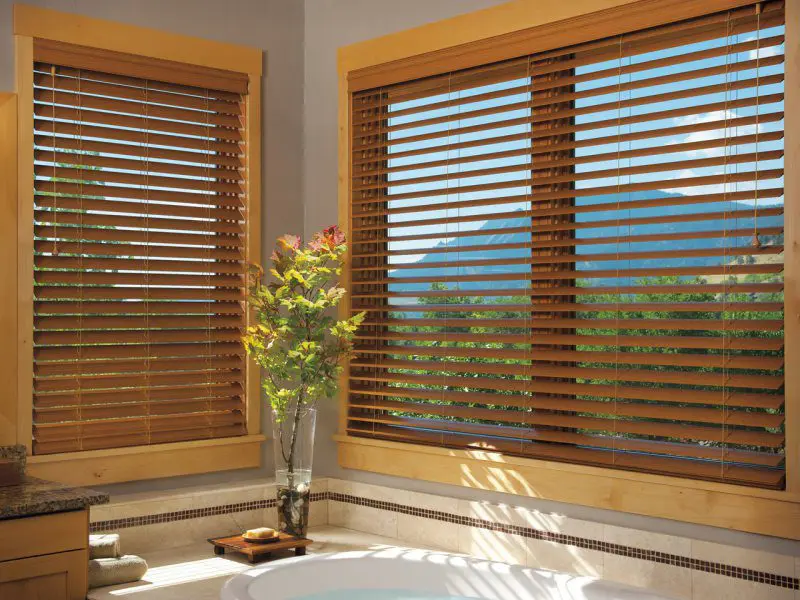
7. Fauxwood blinds
Similar to wooden blinds, these blinds just create an impression of horizontal wooden slats. The functionality, appearance, cleaning and maintenance as well as the working is quite similar to wooden blinds. They are styled like real wood, and come in a variety of slat breadths.
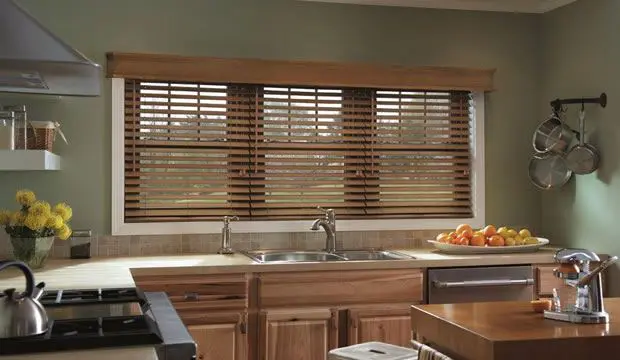
8. Perfect Fit Blinds
These are special type of blinds which come in discreet frames. The frames are clipped between the beading and the gazing of windows. The blinds seem to become a part of the window itself, and the fit the pane almost perfectly. They may be used even when the windows are not shut.
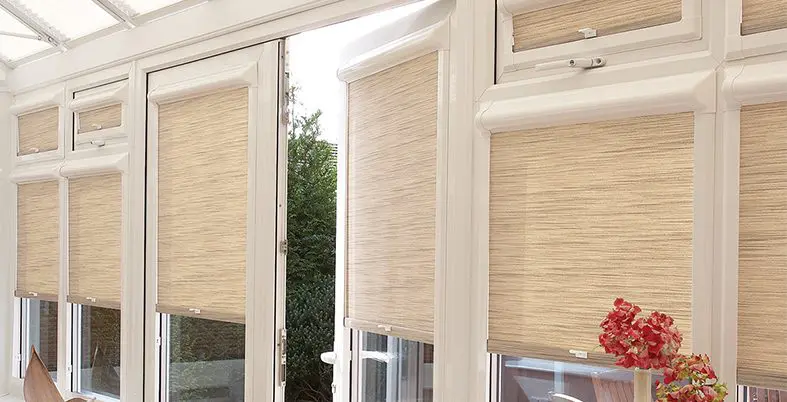
– Sourav Suman






